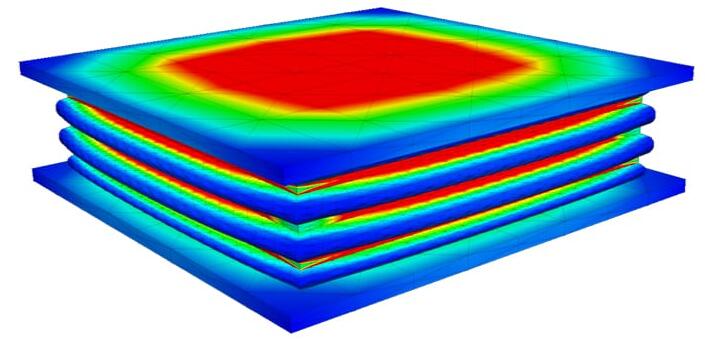The San Francisco-Oakland Bay Bridge is over 7 kilometers long and can accommodate one million vehicles per day. Built using nearly 250 million kilograms of steel, the bridge must support 450 million kilograms of vehicles per day and approximately 500,000 kilograms of vehicles at any given time.
The potential for bridge collapse is frightening, especially when crossing a structure as large as the Bay Bridge, which collapsed in 1989 as a result of the Loma Prieta earthquake. The vibrations from the earthquake were so strong that they sheared off the bolts that held part of the bridge to its base. As the earthquake vibrations increased, the section moved 7 inches to the east and the western end of the section went beyond the edge of the seat, causing the entire bridge section to collapse onto the bottom deck; the collapse occurred at Pier E9, which is located between Yerba Buena Island and Oakland.
The Bay Bridge was designed to withstand earthquakes by implementing techniques that allowed the bridge to adapt to such drastic environmental conditions. In fact, all of the bridges were designed to be moderately flexible and to embed a "bend or break" design philosophy. Assume that the bridge is subject to unpredictable external forces and torques caused by high wind speeds, temperature changes, heavy traffic, and sometimes even earthquakes. So, if flexibility is critical, how does it happen?

Bridge flexibility is achieved primarily through a component called a bridge resilient bearing pad. This is usually made of a strong and flexible material such as neoprene (a heavy-duty industrial rubber). These pads are placed between the superstructure (e.g. the bridge) and the substructure (e.g. the vertical supports called piers). Their primary function is to distribute the superstructure loads to the substructure and to allow the necessary movement of the superstructure under irregular environmental conditions without creating any harmful stresses that could compromise the structural integrity of the bridge. When the structural integrity of a bridge is compromised, the bridge may collapse.
Collapse prevention is not the only function of resilient bearing pads. The pads extend the life of the bridge by reducing wear and tear on the bridge material. These pads help the government save money by delaying bridge replacement, much like shoes allow humans to walk long distances.
Incidentally, the resilient bearing pads were installed in the location of the Bay Bridge failure as part of the 1999 earthquake retrofit project.

Because bridge elastomer bearing pads are critical to safe and cost-effective bridge design, they are extensively prototyped and tested before being used in production.
Using simulation software such as SimScale as part of this process, elastomeric bearing pads can be tested virtually under different design and loading assumptions. For example, a bearing pad can be assumed to consist of an elastic material reinforced with steel plates, and three basic load cases can be simulated and observed: 1) compression, 2) shear compression, and 3) rotational compression.
The results can be analyzed by observing the Corsi stress in a contour plot. It can even be observed that the load carrying capacity of the bearing is enhanced with the introduction of steel plates.
As we have seen, the design of elastic bearing pads using simulation software plays a crucial role in the safety, reliability and service life of bridges.
Previous: Dancing Fountain: An Extravagant Display of Water and Light
Next: Fiberglass Plisse Mesh Panels: Pleated Window Shading Screen Netting for Retractable Window Screen
Copyright:@2020-2021
Comments Please sign in or sign up to post.
0
0 of 500 characters used